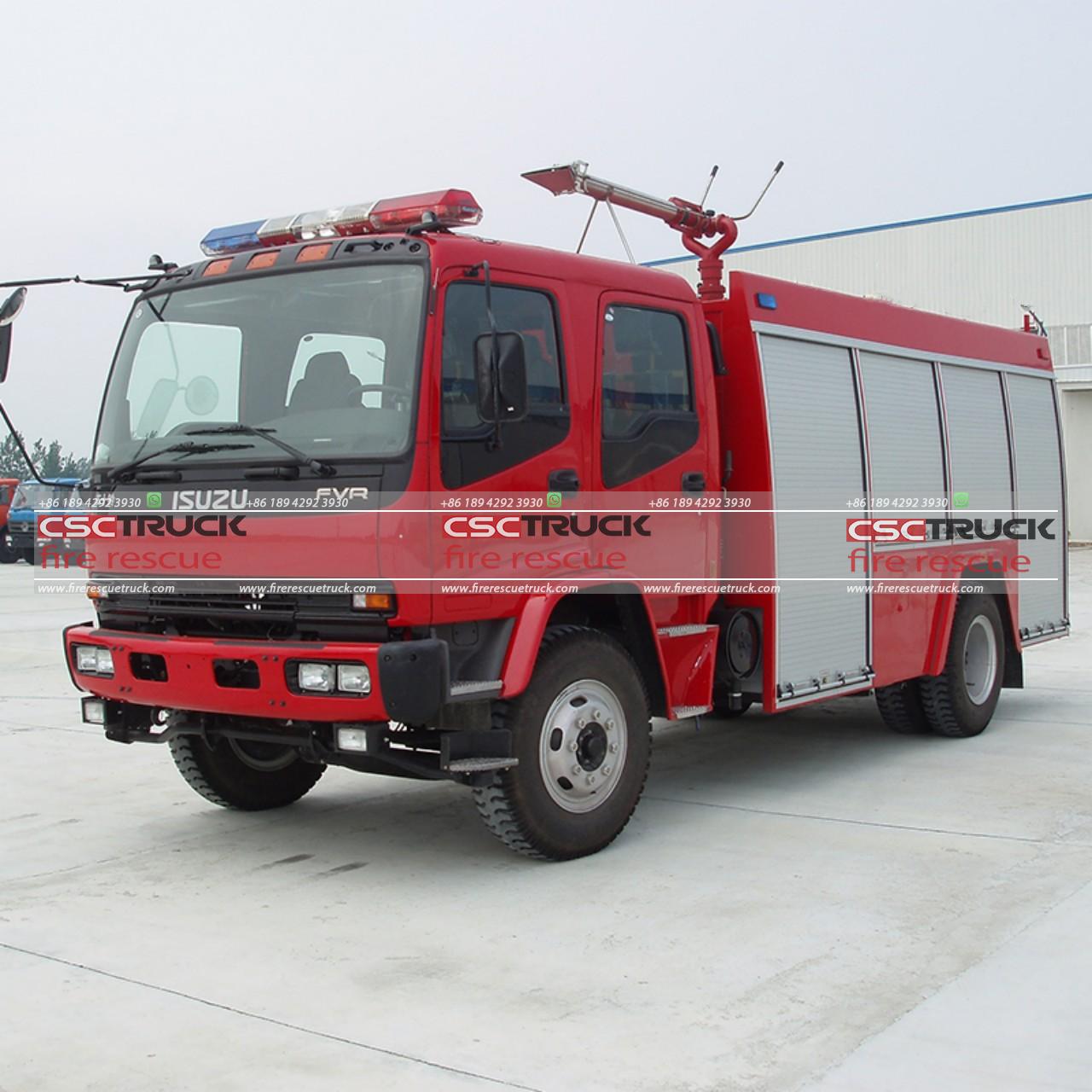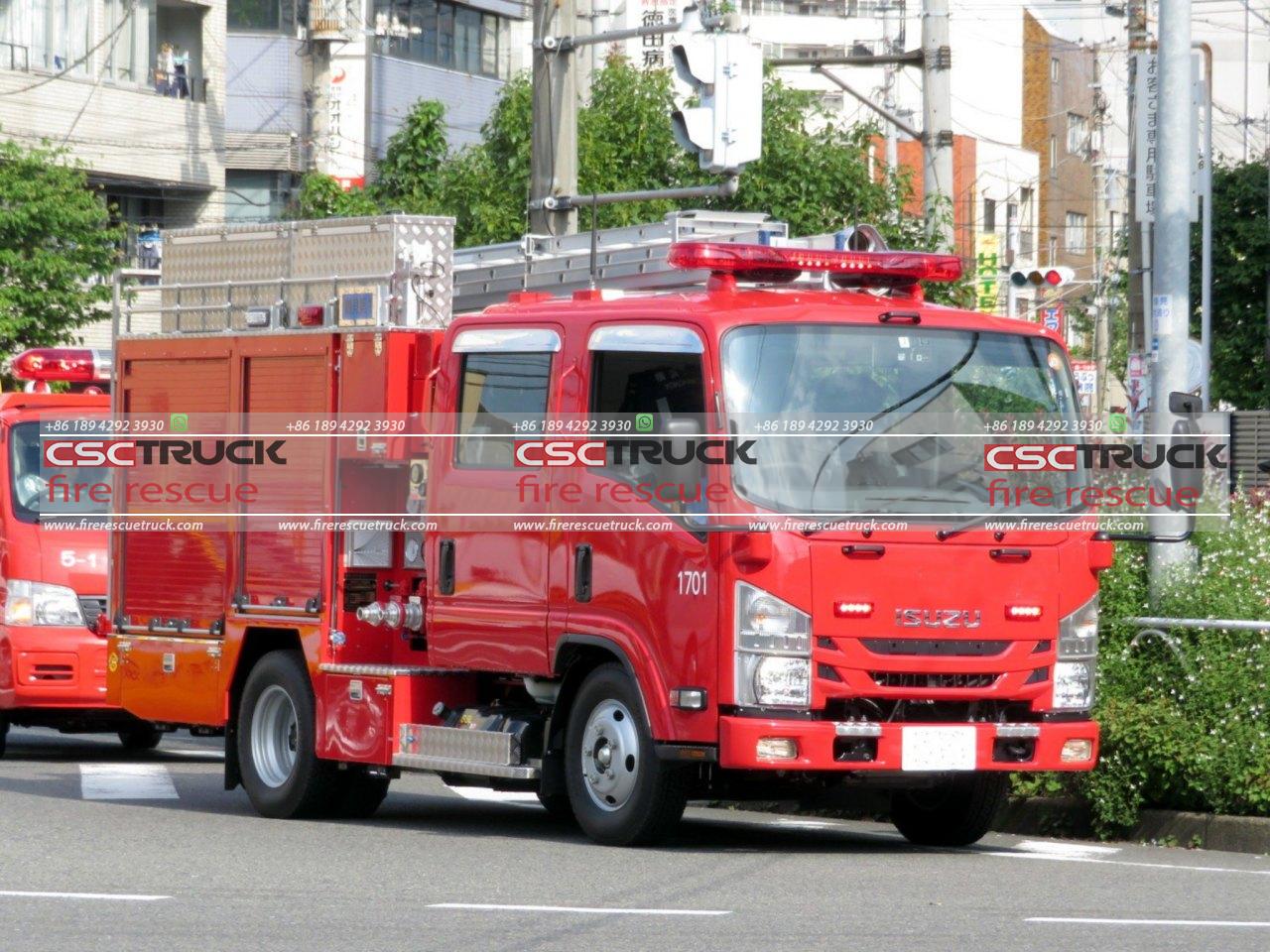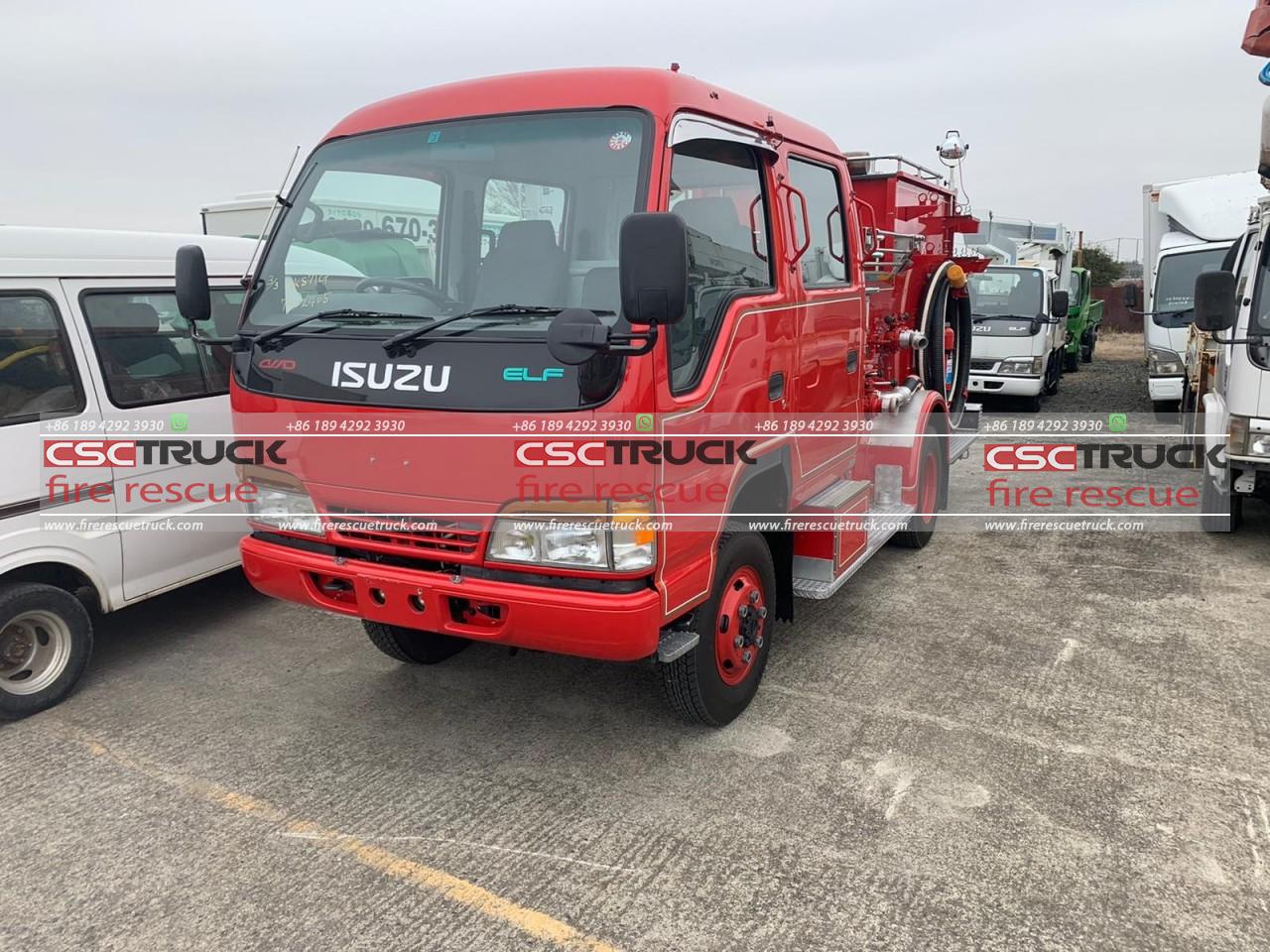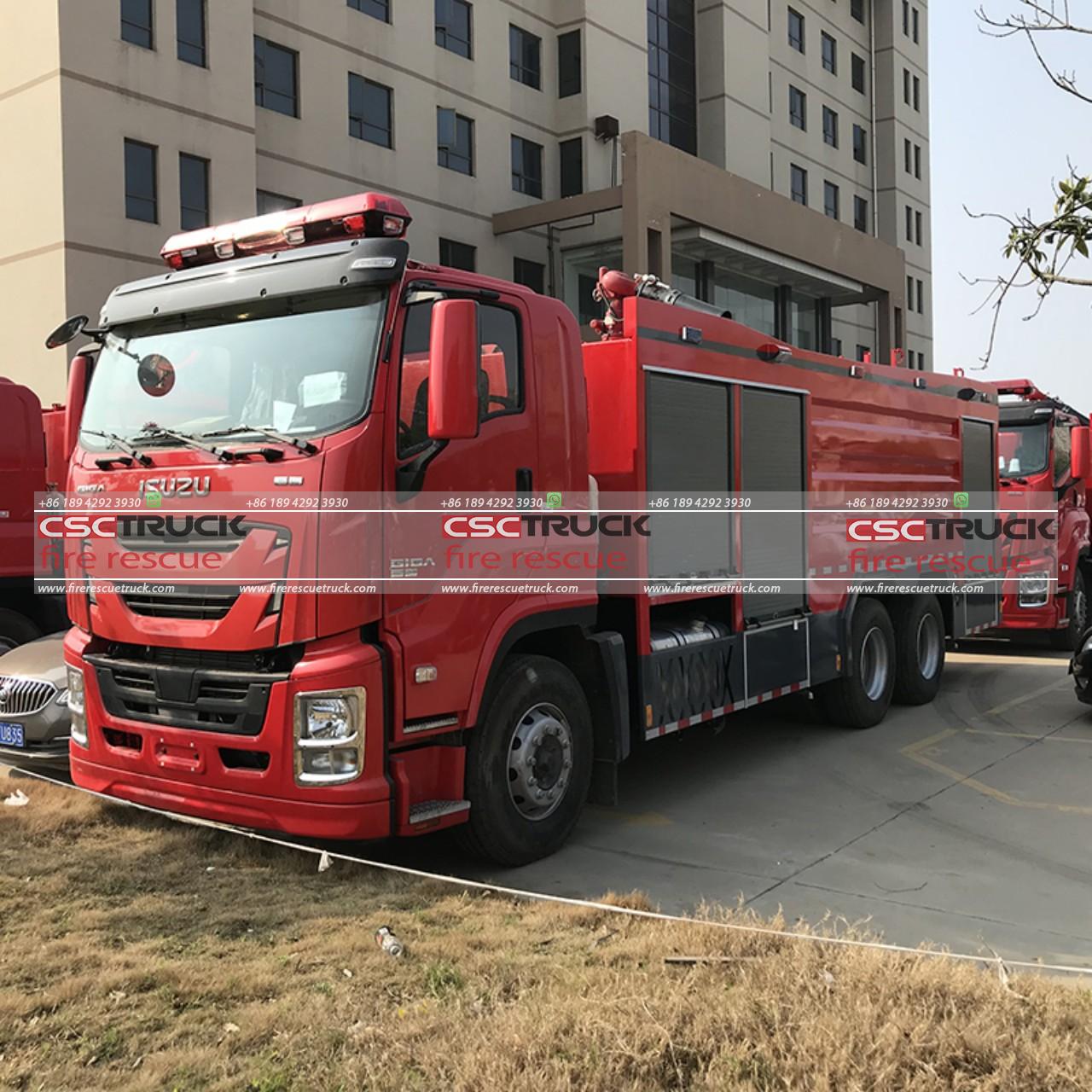What is “Firetruck” in Japanese?
In Japan, fire safety and emergency response hold a special place in society. One of the most iconic symbols of fire protection is the firetruck, which plays a crucial role in saving lives and protecting property from the devastation of fires. The term “firetruck” in Japanese is 消防車 (shōbōsha), combining 2 keywords: 消防 (shōbō), meaning firefighting, and 車 (sha), meaning vehicle or car. This seemingly simple word embodies much more than just a vehicle; it represents Japan’s intricate firefighting system, its culture of safety, and the evolution of technology used in emergency services.
In this article, we will explore the meaning of shōbōsha, the types of firetrucks used in Japan, how they differ from firetrucks in other parts of the world, the role they play in Japanese society, and a brief look into their history.
The Breakdown of the Term 消防車 (Shōbōsha)
消防 (Shōbō): Firefighting
The first part of the word, 消防 (shōbō), translates directly to “firefighting” or “fire prevention.” This word is used not only for firefighting itself but also for the broader concept of fire safety, prevention, and emergency response in Japan. It reflects a long history of fire-related disasters in the country, including many large urban fires during the Edo period (1603–1868), which shaped the development of firefighting as a key aspect of public safety.
Japan is particularly vulnerable to fires due to its traditional wooden buildings and densely populated urban centers. This led to the early establishment of sophisticated firefighting systems, which still exist today. Shōbō is deeply ingrained in Japanese culture, with local fire brigades and neighborhood organizations playing an essential role in community safety.
車 (Sha): Vehicle
The second part of the word, 車 (sha), means vehicle. This can refer to cars, trucks, or any type of wheeled vehicle. Combined with shōbō, it specifically denotes a firefighting vehicle or firetruck. In modern times, shōbōsha refers to the highly specialized vehicles used by professional firefighters to carry equipment, water, and personnel to the scene of an emergency.

Types of Firetrucks in Japan
Just like in other parts of the world, Japan has a variety of firetrucks designed for specific purposes. These vehicles are highly specialized to handle different types of emergencies, from structural fires to natural disasters, and even hazardous material incidents. Below are some of the common types of firetrucks in Japan:
1. Pumper Truck (消防ポンプ車, Shōbō ponpusha)
The most common type of firetruck in Japan is the 消防ポンプ車 (shōbō ponpusha), or pumper truck. This vehicle is equipped with a water pump, hoses, and a water tank, allowing firefighters to spray water directly onto fires. These trucks are designed to respond quickly to fires in residential and commercial areas and are the backbone of fire response units across Japan.
Pumper trucks in Japan are often smaller and more compact than their counterparts in other countries, which allows them to navigate narrow streets in densely populated urban areas. This design is crucial for effective firefighting in cities like Tokyo and Osaka, where space is limited.
2. Aerial Ladder Truck (はしご車, Hashigo-sha)
The はしご車 (hashigo-sha), or aerial ladder truck, is another essential vehicle in the Japanese firefighting fleet. Equipped with a long, extendable ladder, these trucks are used to reach higher floors in multi-story buildings, which are common in Japan’s urban landscape. The aerial ladder is also essential for rescuing people trapped in tall buildings or applying water to fires at high altitudes.
Due to the prevalence of high-rise buildings in cities like Tokyo, these vehicles are a critical part of the fire department’s arsenal. The ladder can extend to significant heights, and some trucks are also equipped with a platform or basket at the end of the ladder to assist in rescues.
3. Rescue Truck (救助車, Kyūjo-sha)
The 救助車 (kyūjo-sha), or rescue truck, is designed for search and rescue missions, especially during natural disasters such as earthquakes or landslides. Japan is prone to frequent natural disasters, and rescue trucks are equipped with specialized tools like hydraulic cutters, spreaders, and jacks to extricate people from collapsed buildings or vehicles. They often carry medical supplies and first-aid equipment to assist injured people before they are transported to hospitals.
4. Foam Firetruck (泡消火車, Awa shōkasha)
For handling chemical fires or fires involving flammable liquids, Japan uses the 泡消火車 (awa shōkasha), or foam firetruck. Instead of water, these trucks use foam to suppress fires that are resistant to water, such as oil fires. These vehicles are often found in industrial areas, at airports, or in locations where hazardous materials are stored.
5. Wildland Firefighting Truck (森林消防車, Shinrin shōbōsha)
Japan’s mountainous and forested regions are vulnerable to wildfires, especially during dry seasons. The 森林消防車 (shinrin shōbōsha) is designed to fight fires in rural or forested areas. These trucks are equipped with off-road capabilities to navigate difficult terrain and carry specialized equipment to prevent the spread of forest fires.

Firetruck Features Unique to Japan
Japanese firetrucks have some unique features that set them apart from those used in other countries. One of the most notable differences is their size. Due to Japan’s narrow roads and crowded urban areas, many firetrucks are more compact and agile compared to the larger vehicles used in countries like the United States. This allows them to maneuver quickly through tight spaces, which is essential when responding to emergencies in densely populated areas.
Another unique feature is the integration of advanced technology. Many Japanese firetrucks are equipped with state-of-the-art communication systems, GPS, and even thermal imaging cameras to help firefighters locate hot spots in burning buildings. This high level of technology helps improve the efficiency and safety of firefighting operations.
In addition, Japanese firetrucks often carry large, brightly colored flags and have distinctive sirens to alert pedestrians and vehicles of their presence. This is especially important in Japan’s bustling urban centers, where heavy foot traffic can delay emergency response vehicles.
Firetrucks and Japanese Society
Firetrucks, or shōbōsha, are more than just emergency vehicles in Japan; they are an integral part of the country’s commitment to public safety. Japan’s fire departments are highly regarded for their discipline, precision, and readiness to respond to emergencies, whether it’s a fire, natural disaster, or other crisis.
Local fire brigades often participate in community events and are involved in public education efforts to promote fire safety. It’s common to see firetrucks at neighborhood safety drills, especially in areas prone to natural disasters like earthquakes and typhoons. This emphasis on community involvement helps build a culture of preparedness and ensures that citizens know how to respond in case of an emergency.

History of Firefighting in Japan
The roots of Japan’s firefighting system can be traced back to the Edo period when frequent fires devastated the city of Edo (modern-day Tokyo). During this time, the city’s buildings were mostly made of wood, and fires could spread rapidly. To combat this, the Tokugawa shogunate established a formal firefighting organization known as the 町火消 (machibikeshi), composed of local firefighters who were responsible for protecting their neighborhoods.
Over time, Japan’s firefighting system evolved, incorporating Western techniques and equipment. Today, the country has one of the most advanced firefighting systems in the world, with shōbōsha at its core.
Conclusion
In Japan, the firetruck, or 消防車 (shōbōsha), is a vital tool in the fight against fires and other emergencies. These vehicles, designed to be compact, technologically advanced, and highly specialized, reflect the unique challenges of Japan’s urban and rural environments. Firetrucks are not only a symbol of modern firefighting but also a reminder of Japan’s long history of disaster prevention and community safety. Through their presence, shōbōsha ensures that Japan remains prepared to face any emergency, embodying the nation’s commitment to protecting its people and property.








